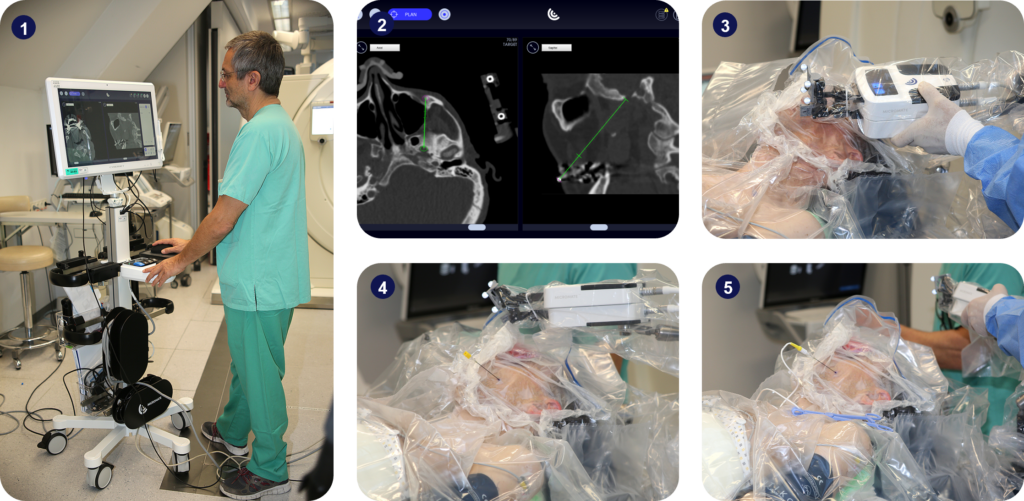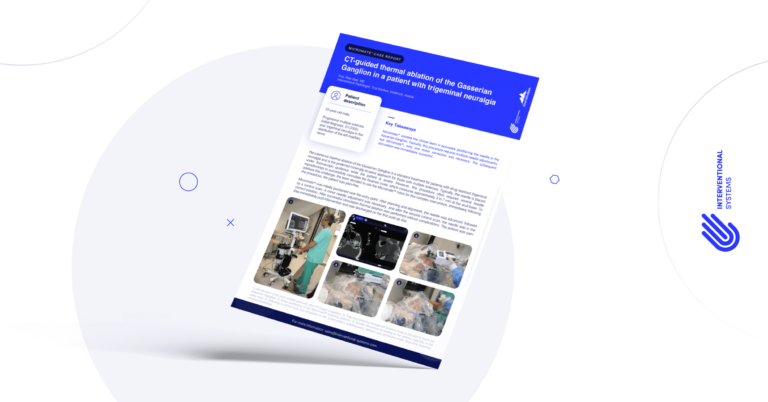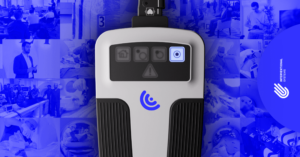Micromate™ Case Report series presents real cases performed by physicians currently using our full-fledged robotic platform for percutaneous procedures.
For this case report, we head out to the Medical University of Innsbruck (Tirol Kliniken, Austria) to join Prof. Reto Bale for a robotic-assisted, CT-guided thermal ablation of the Gasserion Ganglion in a patient with Trigeminal Neuralgia.
Clinical Context
The patient was a 55-year-old male with Progressive multiple sclerosis (initial diagnosis: 01/2005) and trigeminal neuralgia in the distribution of the left maxillary nerve.
Interventional Procedure
Percutaneous thermal ablation of the Gasserian Ganglion is a standard treatment for patients with drug-resistant trigeminal neuralgia and is the preferred minimally-invasive approach for those with multiple sclerosis.
Typically, the needle is placed under fluoroscopic guidance while the patient is awake. However, this procedure often requires several needle repositioning to successfully cannulate the foramen ovale, which measures approximately 3 to 7 mm at the skull base. To address this challenge, the team decided to use the Micromate™ robot for this complex intervention.
The robotic device was initially positioned near the entry point. After planning and alignment, the needle was advanced, followed by a control scan. A minor needle adjustment was necessary, and after the second control scan, the needle was in the correct position.
After successful stimulation thermal ablation was performed without complications. The patient was pain-free immediately post-intervention and was discharged on the first post-op day.

Key Takeaways
Micromate™ assisted the clinical team in accurately positioning the needle in the Gasserian Ganglion.
Typically, this procedure requires multiple needle adjustments, but Micromate, only one minor correction was necessary.
The subsequent stimulation was immediately successful.




